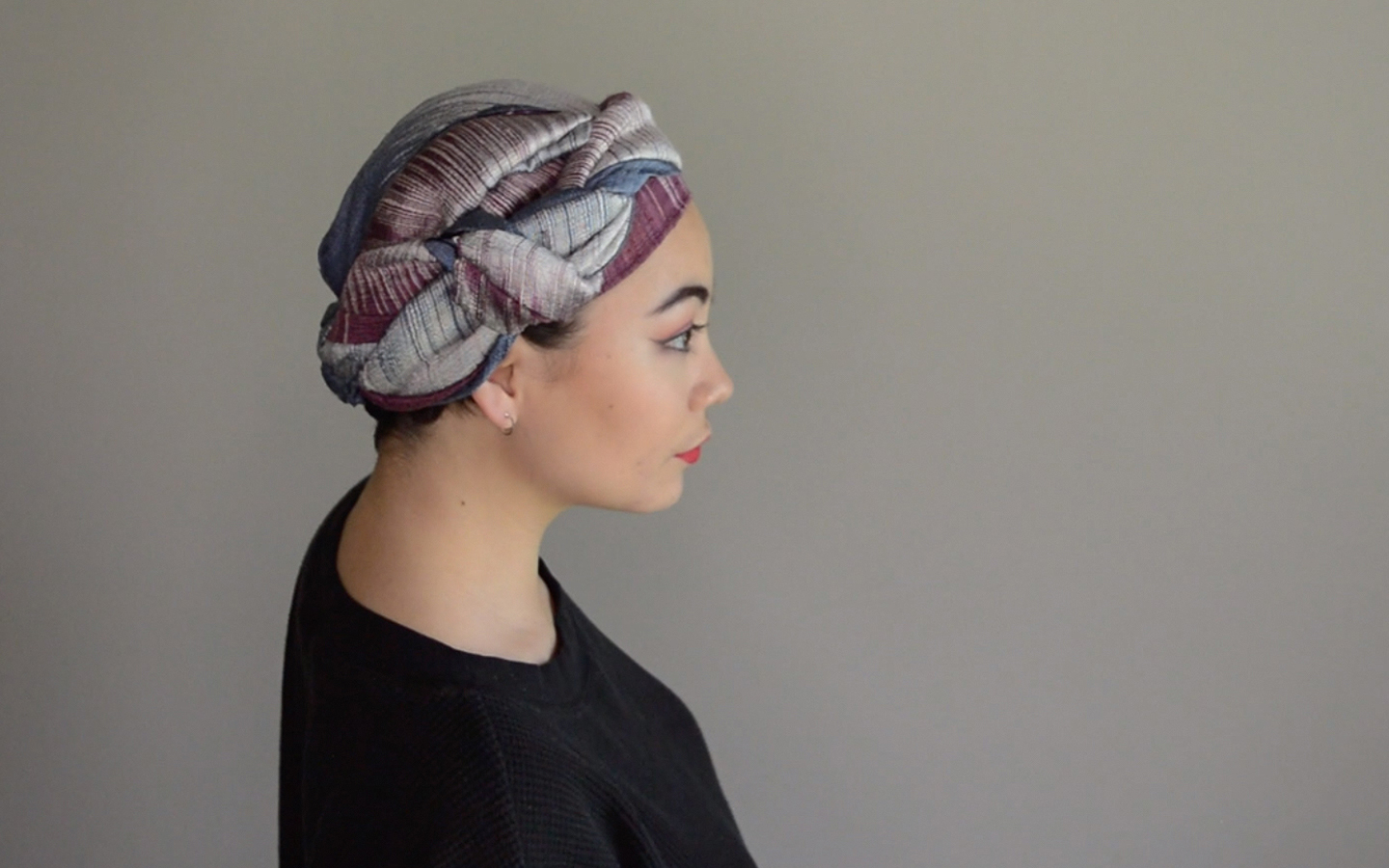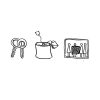Lisa von Werder
BA Honors | Visual Communication Design
DESIGNER BIO
I am a Visual Communication Design major, minoring in Studio Art and Japanese. My interests lie in art, music, and performance, which can be seen in my involvement with ND Admissions, Chorale, and WVFI. My design projects also reflect my love for other fine arts, as I often use music and physical art forms in tandem with graphic design.
I am also an avid advocate for mental health awareness, drawing from personal experience with depression, anxiety, and trichotillomania. The portrayals of these disorders and related experiences in the social vernacular are a bottomless source of inspiration for all kinds of creative endeavors, from poetry to essays to year-long thesis projects.
DESIGNER STATEMENT
Trichotillomania, shortened as TTM or trich, is a compulsive hair-pulling disorder that affects about 1% of the United States population. There is a spectrum of severity, a spectrum of causes, another spectrum for comorbid disorders, and so on. Hair is pulled from everywhere on the body, sometimes to an irreversible extent. Pulling can happen in sudden, frenzied bursts, or daily, little by little, and are often accompanied with feelings of great stress or anxiety. People suffering from TTM often feel a great shame surrounding it and the resulting appearance of bald spots, causing more stress and feeding into a vicious cycle.
To gain a deeper understanding of the various experiences of TTM, I contacted sufferers, family and friends, and therapists and asked for their insight. While most recognize the condition as a problem that should be addressed, some failed to recognize the lack of control on the sufferer’s part, and many felt helpless in finding a solution. Therapy is recommended for long-term results, but may seem “over-the-top” and is not always accessible.
One of the best ways to cut into the vicious cycle was to have some sort of physical barrier that discouraged pulling. Although there are habit-changing devices, they can be expensive. Evidence from the TTM sub-Reddit shows that sufferers are more likely to make do with everyday, readily accessible coping methods.
My design intervention proposes and demonstrates five short video tutorials for wrapping easy headscarf styles, providing a stylish way to cover the effects of hair-pulling while serving as a protective barrier to prevent further pulling. Headscarves allow for plenty of flexibility and fashions and ease of experimentation and creativity. With just a scarf cap, a length of fabric, and a few spare minutes, one can reclaim their confidence and prevent themselves from hurting themselves.
Online
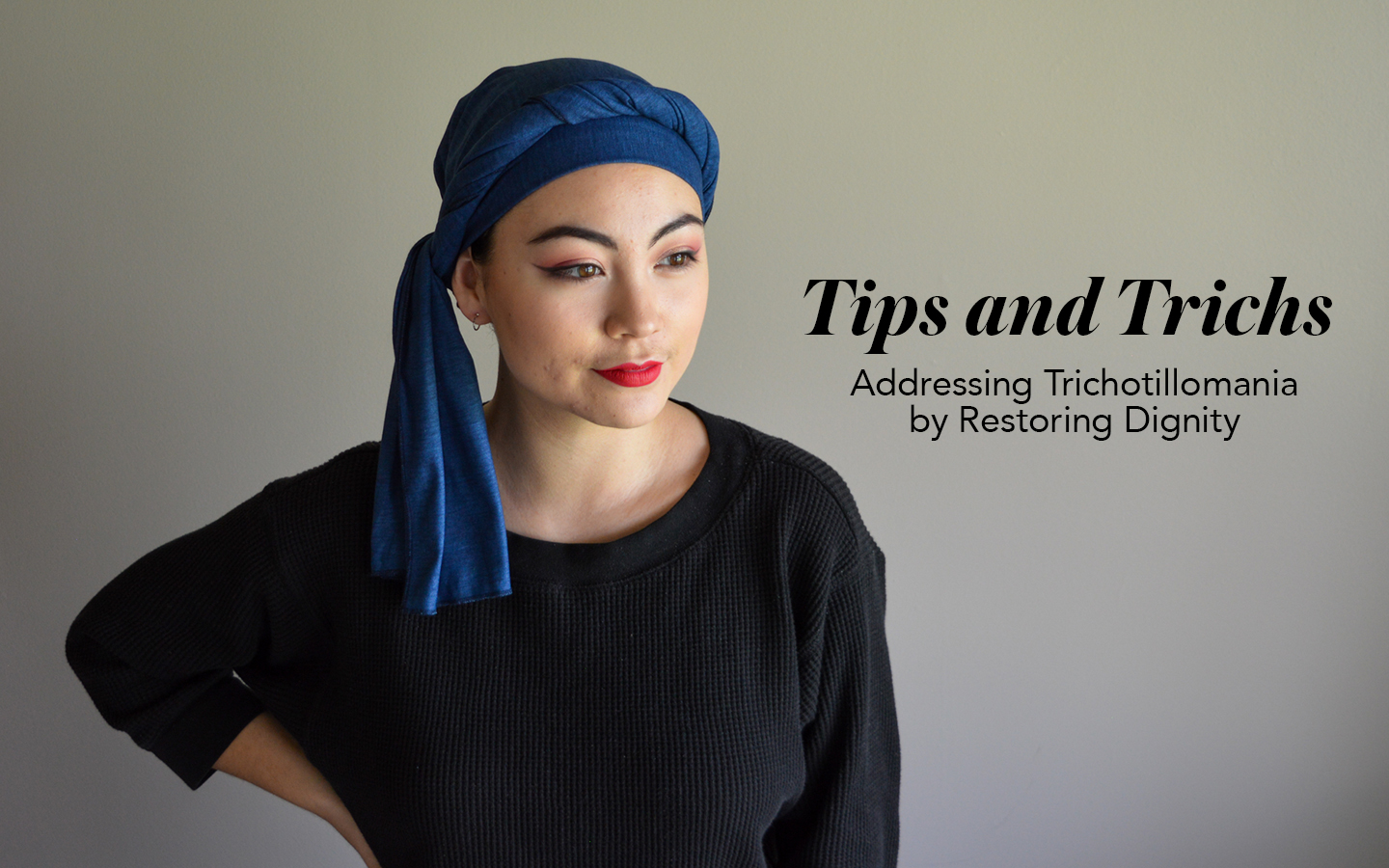
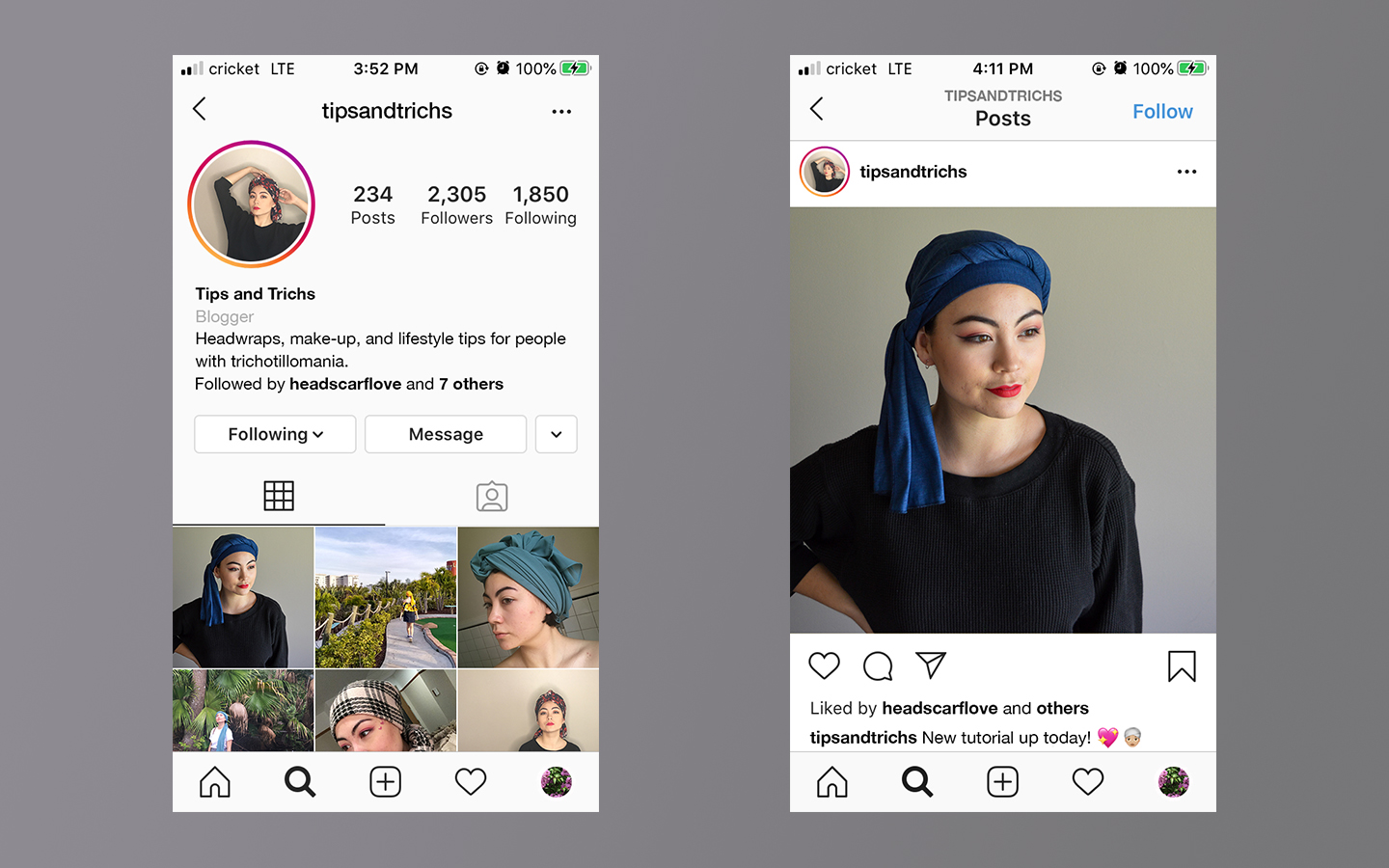
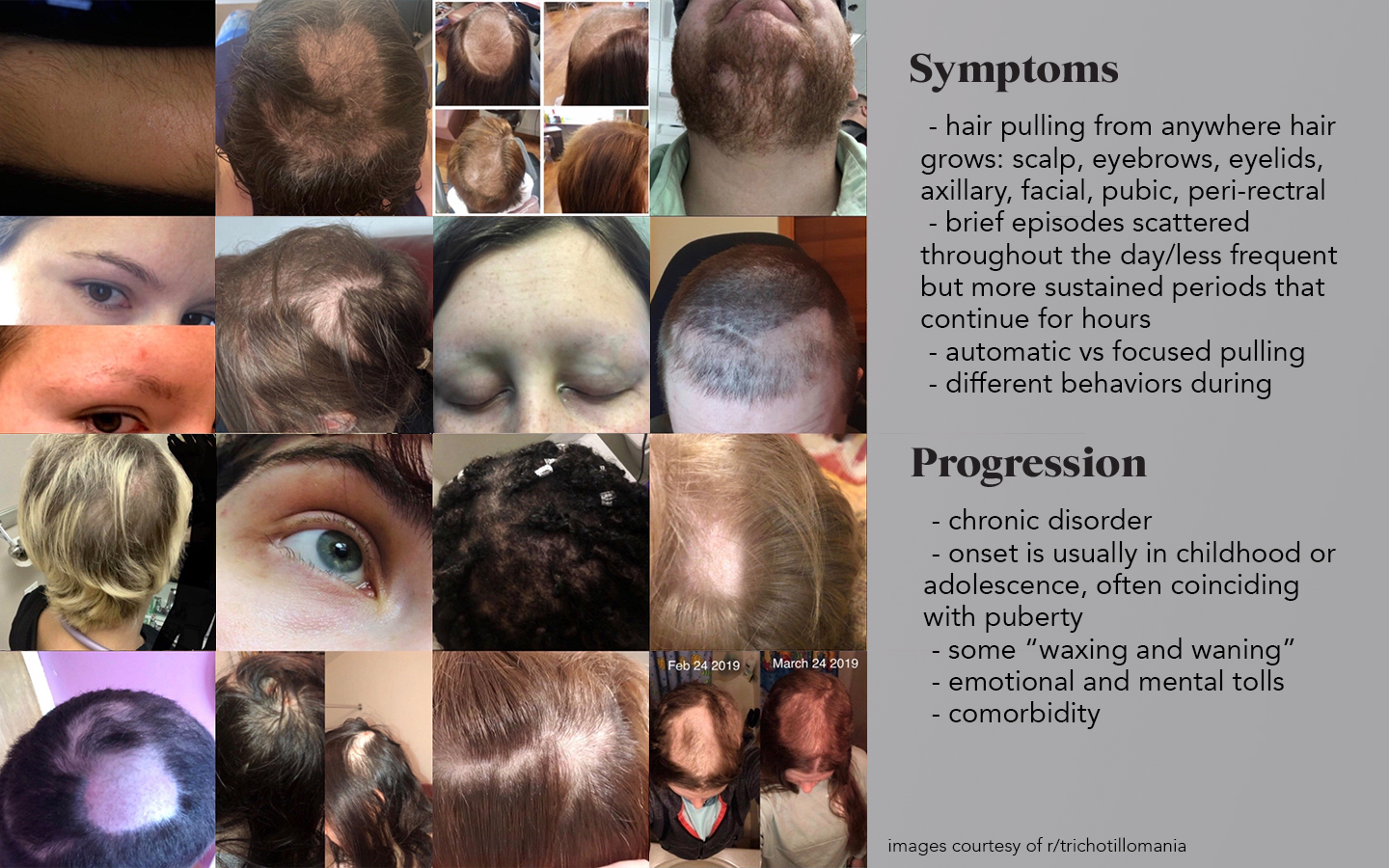
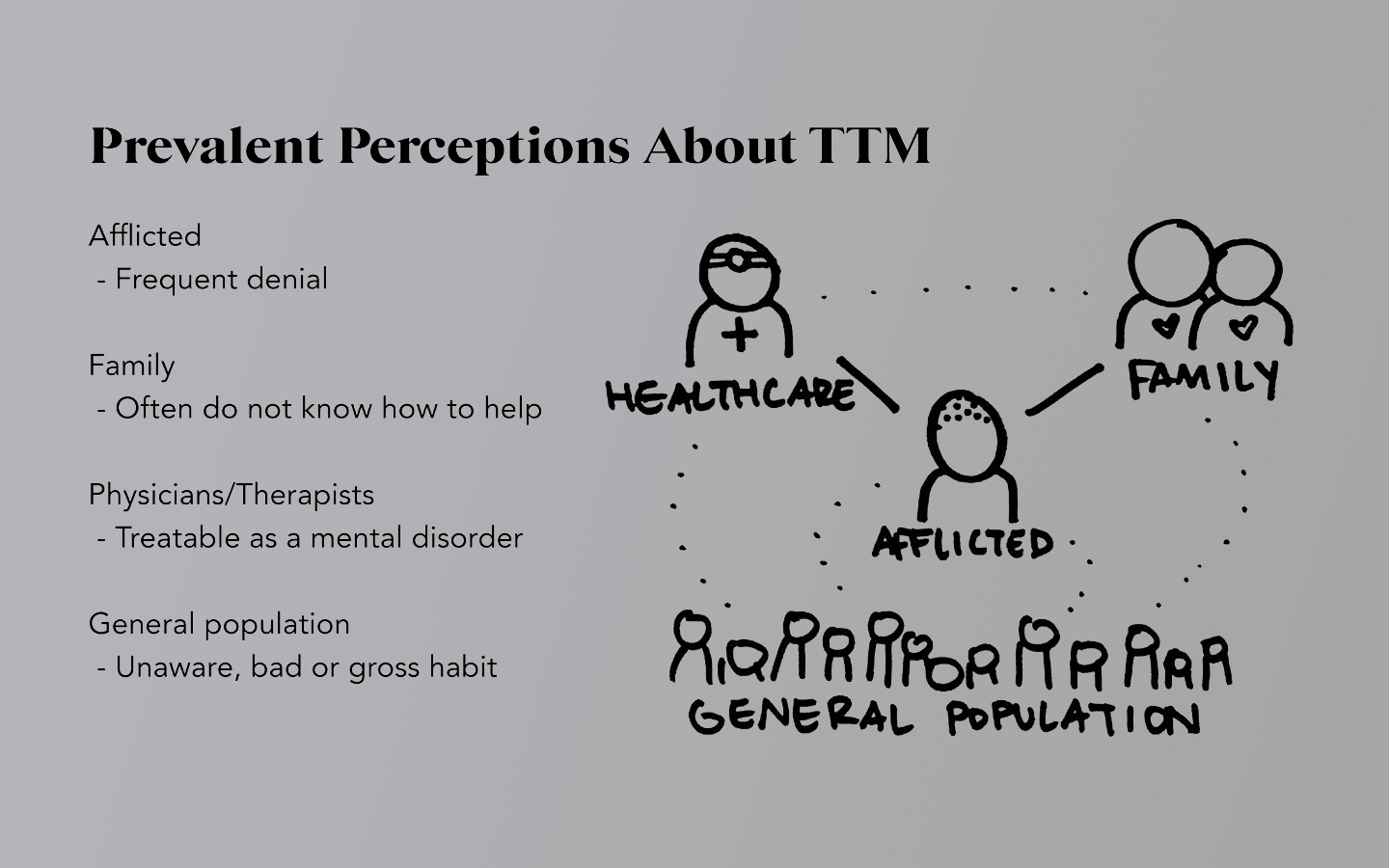
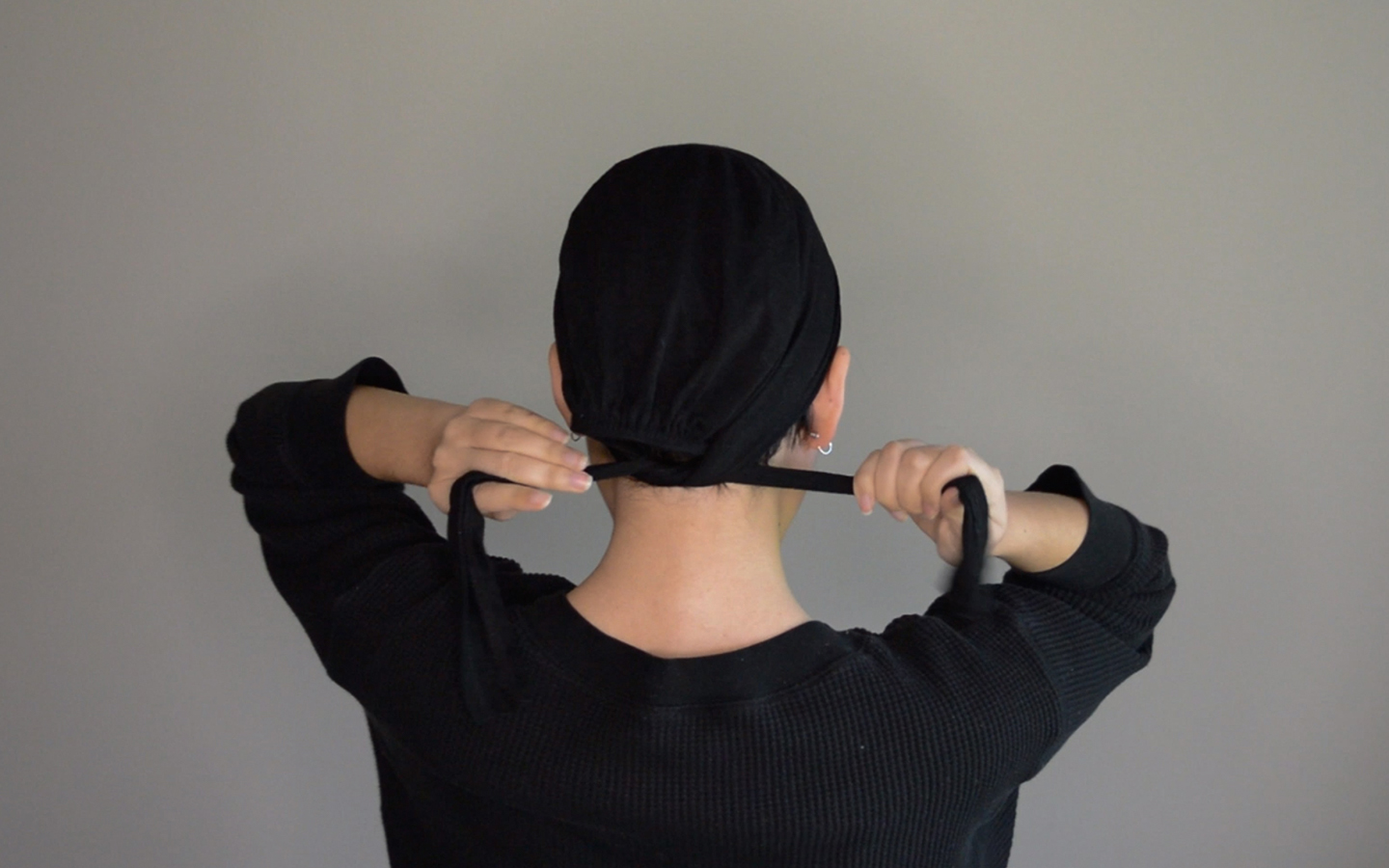
The Braid Knot: Step 1
Video Still | 2020
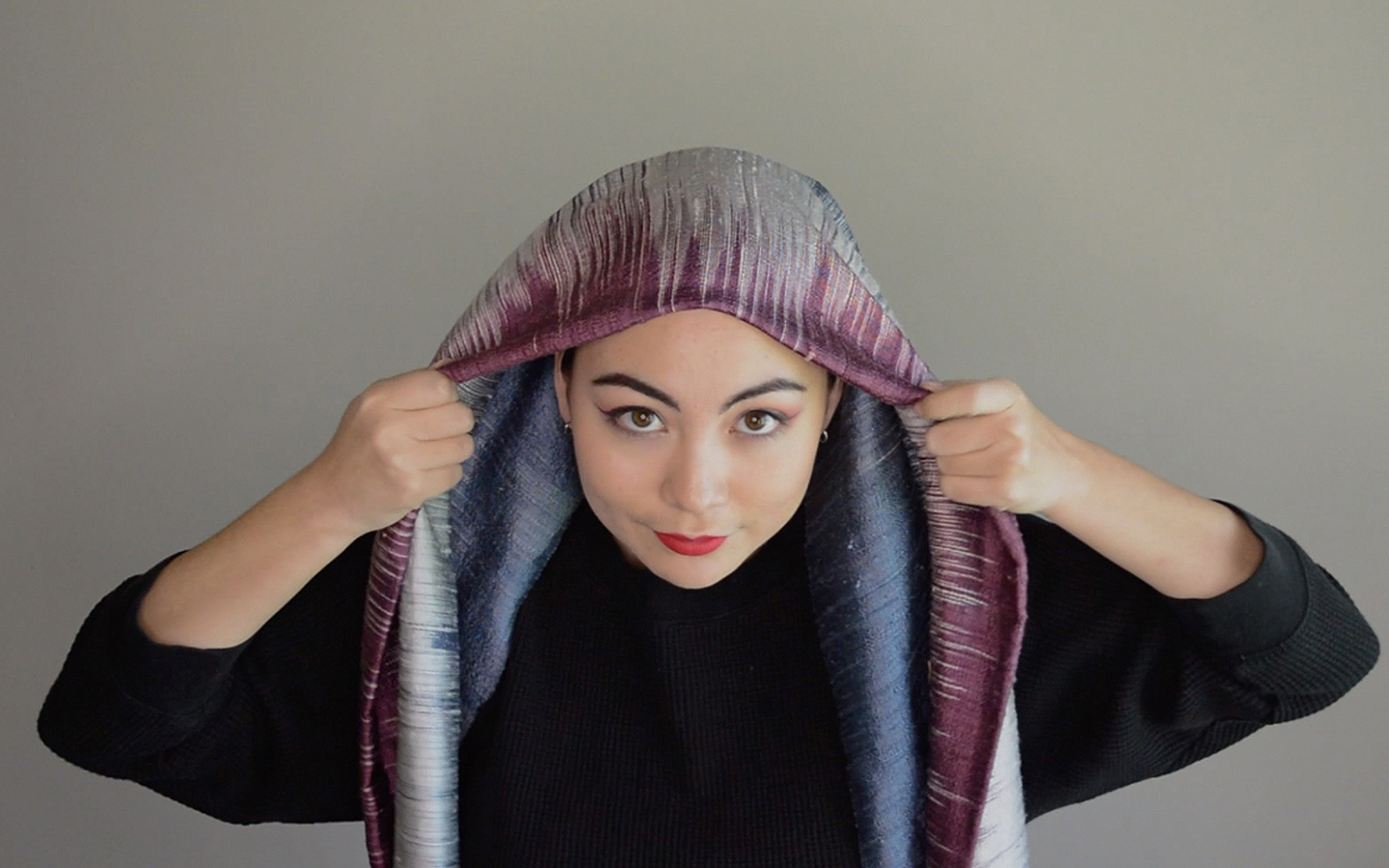
The Braid Knot: Step 2
Video Still | 2020
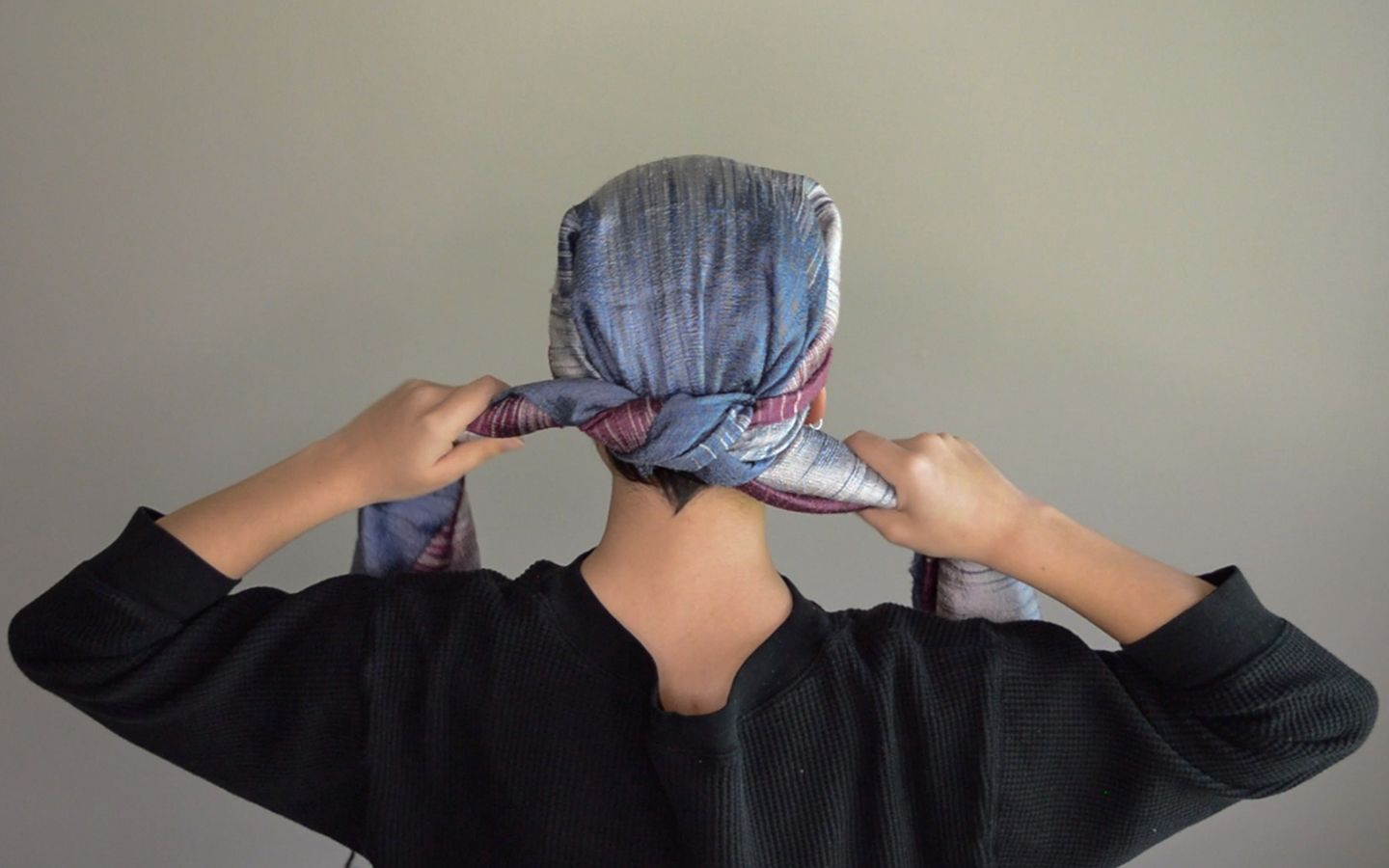
The Braid Knot: Step 3
Video Still | 2020
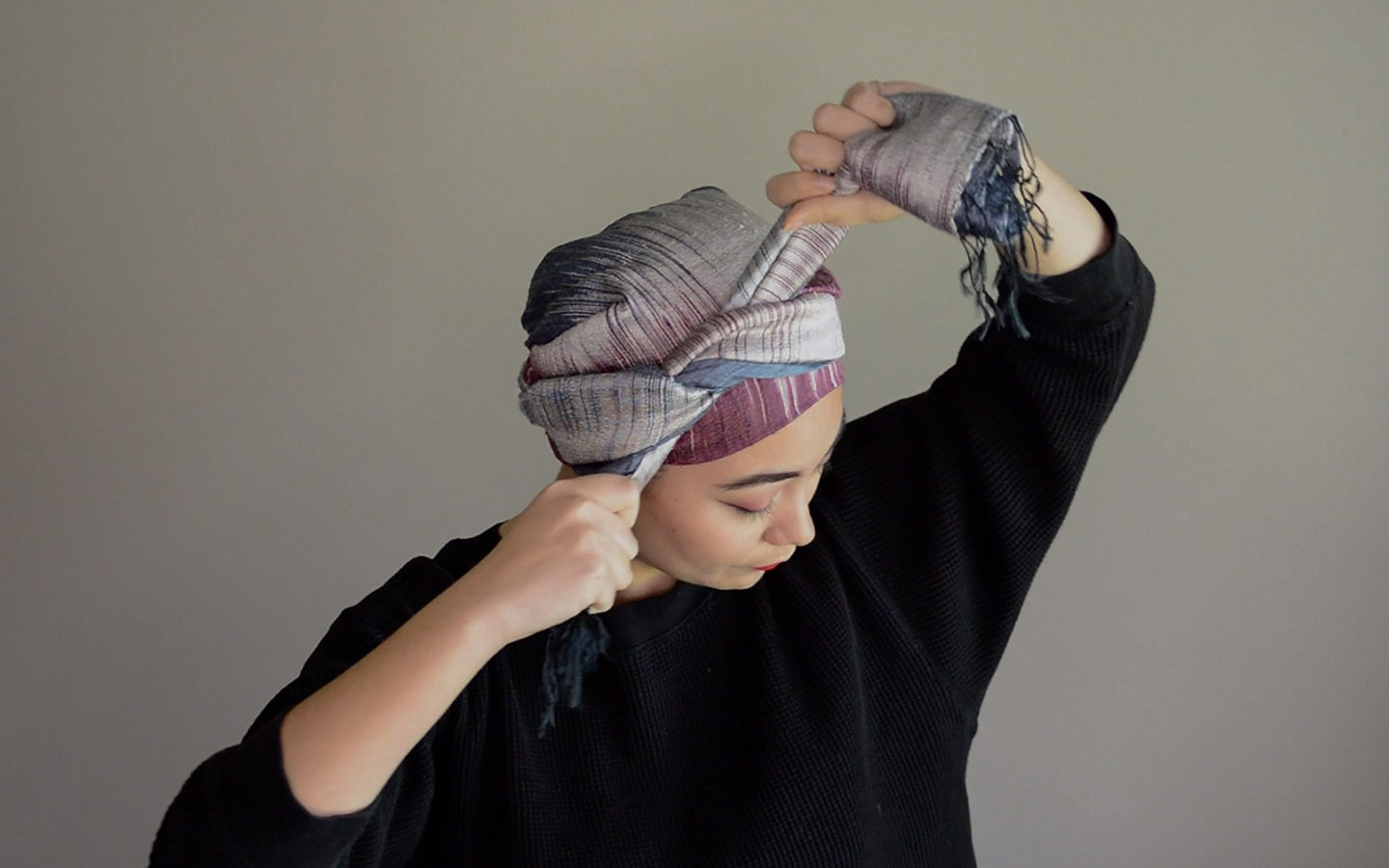
The Braid Knot: Step 4
Video Still | 2020
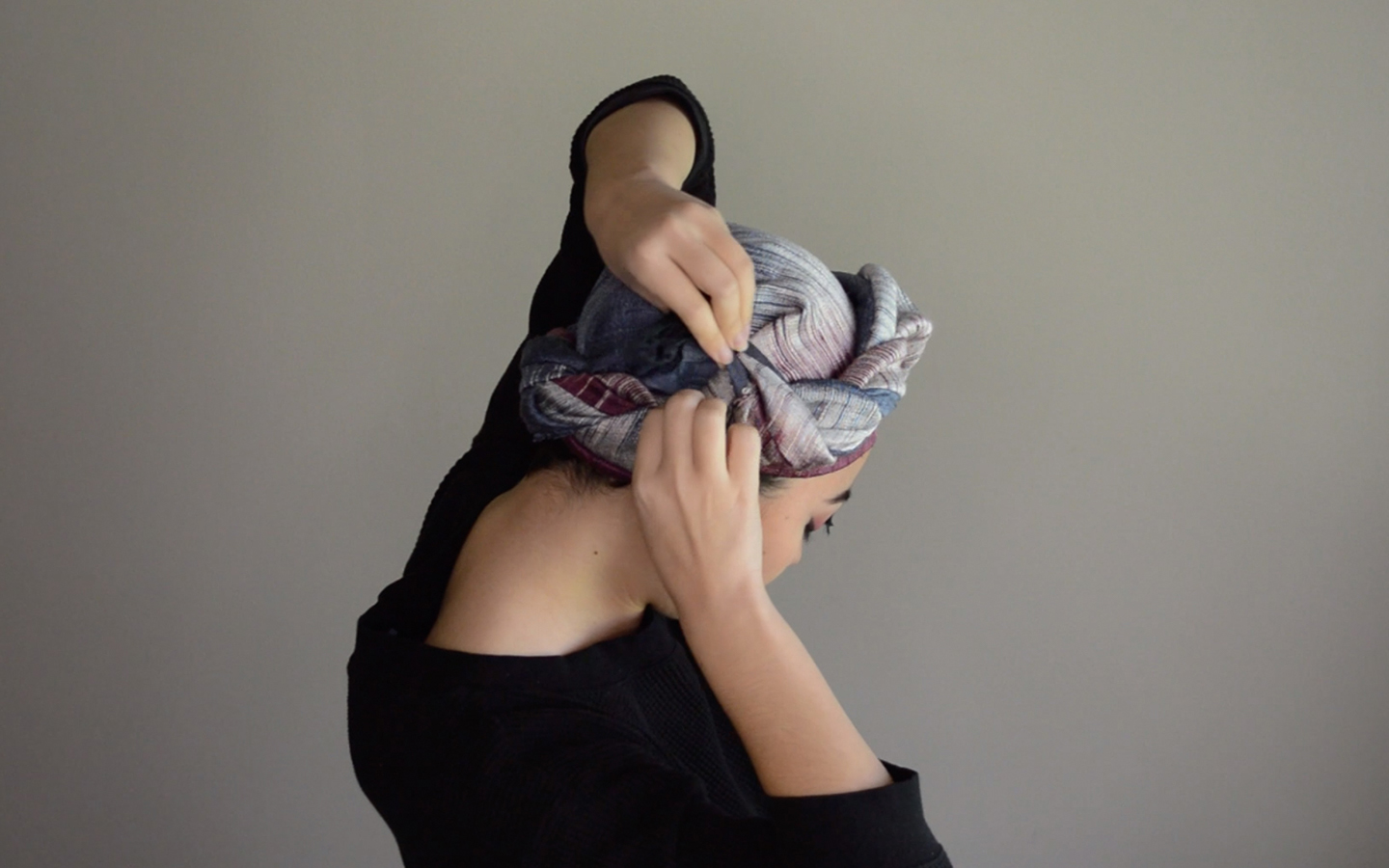
The Braid Knot: Step 5
Video Still | 2020
